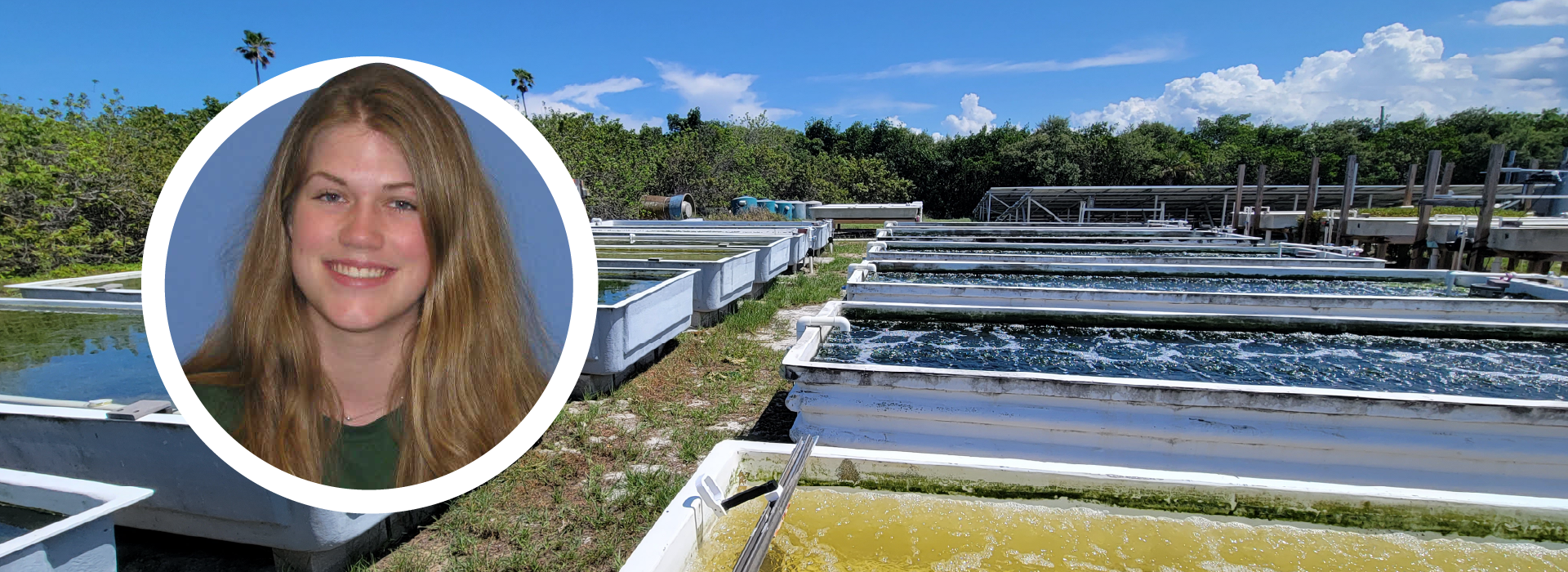Folding Robots
Harbor Branch Graduate Student Improves Aquaculture with Robotics
By Bethany Augliere
Casey Den Ouden, a doctoral student in the ocean engineering program at FAU Harbor Branch Oceanographic Institute, was recently awarded the one-year $34,000 Link Foundation Fellowship in Ocean Engineering and Instrumentation.
For her work, Den Ouden said she hopes to improve shortcomings in aquaculture using robotics based on kirigami, a variation of origami, the Japanese art of folding paper.
“It's hard to form into words how much receiving an award such as this means. I came from a small undergraduate university in northern Minnesota and therefore I didn't have a standard engineering education,” she said. “I’m honored to receive an award that will support my research in more ways than one, but I am beyond honored to represent women in engineering and to continue the legacy of Edwin and Marion.”
Den Ouden completed her bachelor’s degrees in aquatic biology and engineering technology from Bemidji State University in Minnesota. During the summer of 2018, she interned at Harbor Branch’s Systems and Imaging Laboratory to help develop the Hybrid Aerial/Underwater Robotic System (HAUCS), an autonomous amphibious platform to be implemented in aquaculture to improve the efficiency of water monitoring, particularly dissolved oxygen levels, funded by the U.S. Department of Agriculture’s National Institute of Food and Agriculture. A rise or drop in those levels could result in an entire stock of fish or other marine animals dying, she said. Due to her work, she was recruited for the doctorate program in ocean engineering.
Now as a graduate student, she’s expanding that work to further increase the HAUCS’s efficiency, with a kirigami-based robotic extension for aerial drones. It’s a novel approach to deploying and retrieving water quality sensors, she said. The unique design generates a semi-rigid structure when deployed to garner reliable dissolved oxygen measurements while possessing the ability to fold flat onto the platform body to reduce drag while flying, Den Ouden said. Such a design may be beneficial for coastal zone environmental monitoring and other maritime applications, she added
Since 2014, more than half of the seafood consumed globally was farm-harvested, which both aids previously depleted wild species by reducing the stress on those species and by providing a sustainable global food source, she said. “My project aims to ease strains placed on the industry by creating an accurate and reliable autonomous sampling system thus improving stock health.”
If you would like more information, please contact us at dorcommunications@fau.edu.
